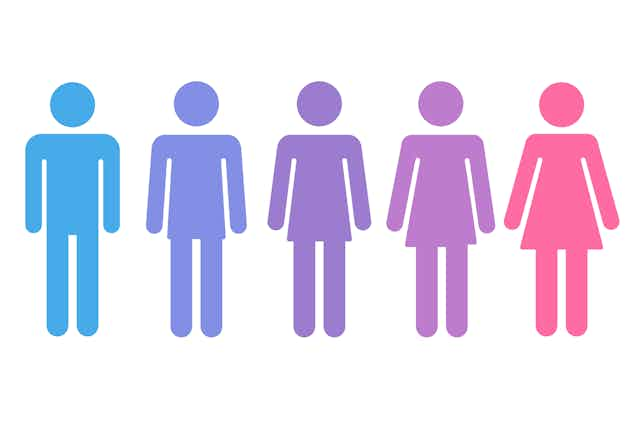It used to be the case that transgender prisoners who didn’t identify as men or women were treated according to the gender on their birth certificate, unless they wanted to live “permanently” in the gender “opposite to the one assigned at birth”. But on November 9, the government published a revised policy under which prisons must now recognise and respect inmates with fluid and non-binary genders.
The change is particularly progressive, given that, currently, UK law only recognises male and female genders.
Alongside its revised policy, the Ministry of Justice also released its first statistics on transgender prisoners. Of the 70 transgender prisoners recorded between March and April 2016, 52 stated their gender as male and 14 as female on reception into custody. However, it’s not clear from the statistics whether this is the gender they were assigned at birth.
The total of 70 represents 0.8 transgender prisoners per 1,000 in custody. But the true number of trans prisoners is likely to be far higher. The government’s statistics exclude prisoners who had a gender recognition certificate prior to imprisonment – this provides legal recognition of someody’s “affirmed” gender, meaning that the transgender person should be treated as anybody else with that gender. Nor does it include inmates who had not had a transgender case conference while in prison, or those whose gender was unknown to staff.
Increased awareness
In recent years, transgender prisoners have received increased attention. Wikileaks informant Chelsea Manning continues to focus international attention on trans prisoners’ experiences – and it recently emerged that she attempted suicide for the second time during her imprisonment. In 2015 in the UK, a petition secured the transfer of transgender woman Tara Hudson from a men’s to a women’s prison, while transgender prisoners Vikki Thompson and Joanne Latham took their own lives. Trans prisoners have also been represented on the small screen through hit series Orange is the New Black.
This growing interest in transgender prisoners is both important and long overdue. But there has been an almost exclusive focus upon transgender women. As the preliminary statistics above highlight, the experience of transgender men and inmates who identify outside the gender binary must not be overlooked.
Despite our legislative nonexistence, a growing number of us identify outside the gender binary, rendering both equality laws and sex-segregated institutions like our prison system increasingly behind the times. Through my ongoing research into lesbian, gay, bisexual and transgender people in prison, I have encountered inmates who challenge the idea that it’s simple and straightforward to separate inmates into men’s and women’s facilities.
Nathan, one of those prisoners I interviewed whose name has been changed here, is housed in a men’s prison, but is bi-gendered and since childhood has felt male on some days and female on others. But due to not identifying as a woman full time, Nathan has been denied access to women’s clothes. Nathan tried to buy gender-neutral clothing but explained this was difficult because of “limited access to clothing retail catalogues”.
Jordan, a transgender man whose name has also been changed, felt unable to tell staff about his gender – and so was viewed and treated as a woman, the gender on his birth certificate. He worried that if he disclosed his status as a transgender man he’d be moved to a men’s prison, where he “wouldn’t survive” and would become “bitch of the wing”. Fortunately, Jordan could freely express his masculinity in prison without revealing his gender identity. Jordan – who had shaved hair and wore men’s clothes, boxers and a tight vest to flatten his breasts – blended in with the butch women in prison.
It would be impossible for a transgender woman in a men’s prison to sport feminine clothes and hair while concealing her gender identity. That said, being able to express his gender didn’t negate the difficulties Jordan felt in hiding his identity. “I’m holding back on who I really am,” he told me. “I’m prisoning myself.”
Staff training is vital
There are various reasons why gender minority prisoners feel unable to disclose their gender. Another trans man I spoke to feared ridicule from other prisoners, and a lack of understanding from staff.
Prison staff, reflective of wider society, are often uninformed on transgender issues, and so I welcome the government’s assurances that relevant training will now be provided to them. Yet, staff are rarely up-to-date with training, and I worry prisons will struggle to educate staff to an appropriate degree, or within a reasonable time scale.
Inmates like Nathan and Jordan raise larger questions about the future of prisons. It is becoming increasingly clear that the sex-segregated nature of our prison system is incongruous with the gendered realities of a significant minority of people. We are witnessing a shift in wider society towards non-gender specific services and facilities. Perhaps the future of our prison system is also gender-neutral.

